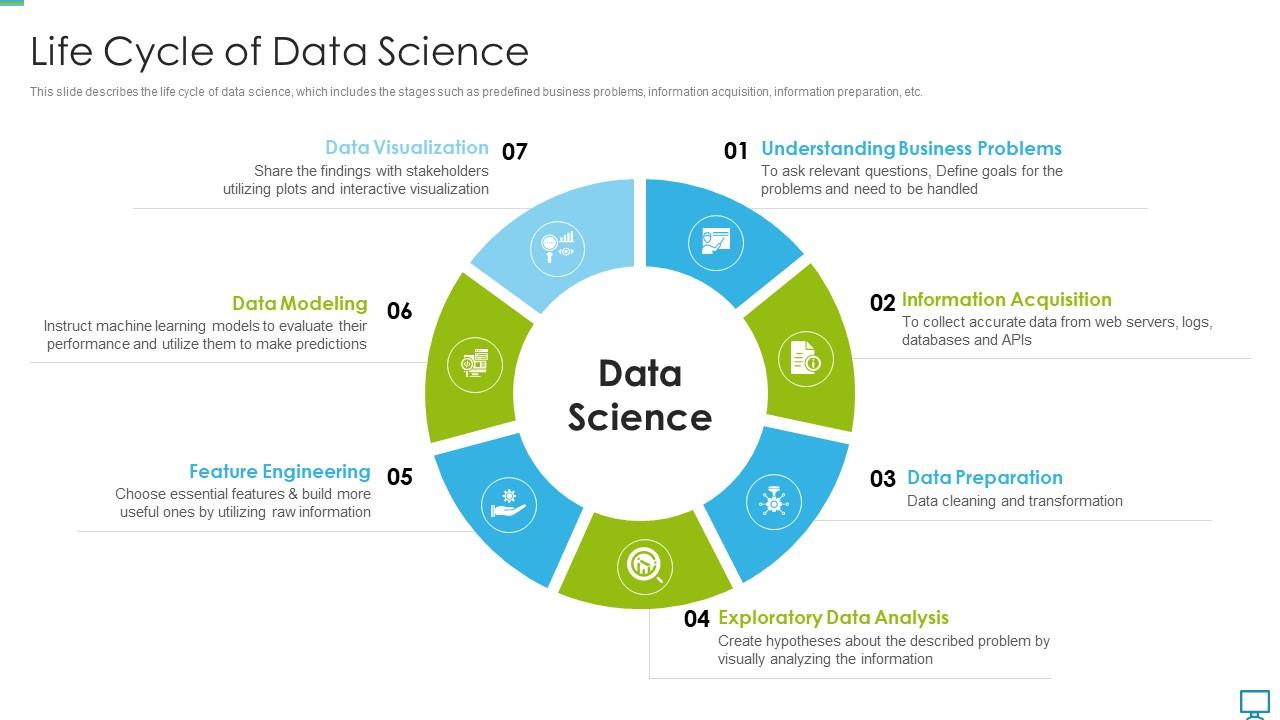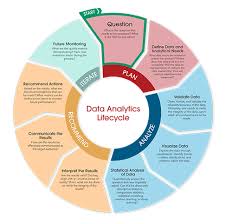Data Science and Data Analytics are two interrelated fields that have become increasingly important in today’s data-driven world. This article will explore the differences and similarities between these two fields and provide real-world examples of their applications. Find out which career is better for you: Data Science vs Data Analytics!
Table of contents
- Data Science vs Data Analytics
- What is Data Science?
- What is Data Analytics?
- Key Components of Data Science
- Key Components of Data Analytics
- Examples of Data Science vs Data Analytics
- Skill Set and Education Requirement for Data Science
- Skills Set and Educational Requirement for Data Analytics
- Responsibilities of a Data Scientist
- Responsibilities of a Data Analyst
- Similarities Between Data Analysis and Data Science
- Make the Right Career Choice
- Frequently Asked Questions
Data Science vs Data Analytics
Data Science is centered around discovering meaningful connections within extensive datasets, while Data Analytics focuses on extracting detailed insights from the data. In conclsuion, Data Analytics can be seen as a specialized branch of Data Science that emphasizes obtaining specific answers to the questions that arise from the field of Data Science.
| Data Science | Data Analytics |
| It requires detailed knowledge of programming languages. | It requires basic knowledge of programming languages. |
| Data science utilizes machine learning algorithms. | Data analytics does not utilize machine learning algorithms. |
| It deals with unstructured data sets. | It mostly deals with structured data sets. |
| The scope of data science is at a macro level. | The scope of data analytics is at a micro level. |
| The goal of data science is to deal with new innovations and explorations. | The goal of data analytics is to deal with the existing resources to create further data. |
What is Data Science?
Data Science is a multidisciplinary field that uses statistical, mathematical, and computer science techniques to extract insights and knowledge from large and complex data sets. It aims to answer questions and solve problems that may arise in the future by examining vast amounts of structured and unstructured data. Data science is applied in various fields, such as healthcare, finance, marketing, and operations management, and is constantly evolving with the vast amount of data generated daily.

What is Data Analytics?
Data Analytics involves statistically analyzing existing datasets to solve today’s challenges. It aims to present outcomes that lead to immediate improvements. Data analytics integrates various types of data to identify linkages and streamline findings. In contrast, Data Science deals with unorganized data and focuses on new developments and projections. Data analytics uses organized, previously collected data to find patterns and conclusions. Although Data Science is a more general phrase, it incorporates Data Analytics to discover new ideas and address analytically challenging business problems using advanced techniques like machine learning and predictive algorithms.

Key Components of Data Science
Here are the key components of Data Science:
Statistics
Statistics are vital in the daily activities of a Data Scientist, and it can be considered one of the necessary talents for the Data Scientist. More simply, statistics studies through a collection of data and seeks out significant trends. It has two sections: descriptive statistics, which attempts to explain trends in existing information, and inferential statistics, which strives to formulate projections about future information.
Machine Learning
Machine Learning is the most critical aspect of data science because it enables self-learning algorithms to forecast natural behavioral patterns in specific settings with the greatest accuracy. The process of employing algorithms to gather data, gain insight into it, and then predict future patterns for a subject is known as machine learning.
Data Visualization
Data visualization entails comprehending the raw records and determining what needs to be shown depending on the objectives and goals of those using it and the processes, not only delivering the processed data effectively. It enhances findings, speeds up decision-making, increases the capacity to hold consumers’ attention, evolves away with the requirements for data scientists, and makes it easier to distribute the generated information.
Also Read: Here are the top Data Science Innovations of 2023
Key Components of Data Analytics
The major components of data analytics are as follows:
Data Mining
Data mining is an essential component of data analytics as a whole. It is among the fundamental fields in data science because it uses the latest analytics methods to unveil the important aspects of data sets. Effective analytics projects within businesses depend on data mining. The data produces real-time analytics systems that analyze streaming data as it is created or collected, as well as business intelligence (BI) and advanced analytics programs that evaluate and present previous data.
Data Modeling
In order to maximize insights and ensure steady data usage, data modeling is the technique of mapping and visualizing the entire technique underlying the gathering, enhancing, and storing of business information. Organizations use data modeling to explain the different types of data they use, the connections between them, and ways to organize it. Data modeling is a method for optimizing data to enhance how data flows throughout organizations for varying business needs.
Data Cleaning
The most significant resource for machine learning and analytics is data. Whether in business or the computer software industry, data is required. Data cleaning, also referred to as data cleansing or data wrangling, is a critical first stage in the data analytics workflow. Data cleaning is more than eliminating incorrect data; it is usually a component.
Examples of Data Science vs Data Analytics
To address the question of data science vs data analytics, let us look at some real-life examples where these can be used and understand the difference between them:
Data Science in Industries
1. Healthcare
Healthcare practitioners use data science, particularly in medical imaging, to help patients receive better diagnoses and treatments. Several cutting-edge healthcare analytics technologies produce clinical data for bettering patient care. These resources also help develop patient-specific drugs, lowering operating expenses for hospitals and medical centers.
2. Weather Forecasting
Data science has a fascinating significance for weather forecasting. Climate change affects various industries such as aviation, agriculture, building, consumer products, athletic events, etc. Most of a data scientist’s tasks involve making short-term forecasts, determining whether a forecast is accurate, and validating models using satellite imagery. Machine Learning helps in this situation for matching patterns. Sensor data can generate local forecasts regarding current weather models using reliable equipment.
Data Analytics in Industries
1. Advertising
Today, studying a user’s historical behavior is the primary emphasis of digital advertising. Another transformation of data analytics is digital advertising. The majority of advertising sources currently, including interactive billboards in towns and internet banners, employ data analytics and data algorithms. It represents one factor contributing to digital adverts receiving higher CTRs than conventional advertising methods.
2. Transportation
Data analytics optimizes making purchasing decisions easier for travelers by using data from social networking sites that indicate the habits and goals of different consumers. Using data gathered from networking sites will also assist businesses in customizing their particular packages and offers, enhancing customized travel suggestions.
Checkout: 10 things you should know about Analytics related Career
Skill Set and Education Requirement for Data Science
- A master’s or doctoral degree in a field relating to analytics
- Having expertise in the industry, you might be employed in, such as product development or financing
- Advanced modeling abilities in mathematics
- AI, deep learning,machine learning(ML) and data analytics
- Big data tools for manipulation, for example, MySQL, TensorFlow and Apache Spark
- Expert level of knowledge of programming languages like Python, R programming, JavaScript, C and C++
- The skills to handle structured and raw data sets.
Skills Set and Educational Requirement for Data Analytics
- An undergraduate degree in a field connected to data
- Solid statistical and probability knowledge
- Strong leadership and communication abilities (for working with teams)
- Problem-solving and analytical approach
- Knowledge of relational database systems and different kinds of data systems
- Skills in handling data and processing
- having experience with business intelligence and modeling software, such as Power BI or Tableau
- Knowledge of SQL,Python, R, and MS Excel is required.
- Developing strategies and solutions for enhancing processes.
Responsibilities of a Data Scientist
- Collecting data and locating reliable data sources
- Preparation of the structured and unstructured data groups
- Examining vast and complicated data to find overlooked trends and patterns
- Developing and utilizing multiple machine-learning techniques and predictive models
- Combining models with ensemble modeling
- To showcase information and findings, perform great data visualization.
- Create solutions and provide answers to difficult business problems.
- Communicate and organize with various teams, such as engineering departments and product development groups.
Responsibilities of a Data Analyst
- Utilize statistical methods and software to examine data and produce results.
- Utilizing database management technologies and working with databases
- Gathering information from a variety of reliable primary and secondary sources
- Keeping up with and administering data systems
- Examining, translating, and detecting patterns or hidden trends in large, complicated datasets
- Data cleaning and filtering procedures
- Recognizing management issues and needs
- Developing methods and techniques for enhancing processes.
Also Read: How to create a High performance Analytics team?
Similarities Between Data Analysis and Data Science
Data Science and Data Analytics share several similarities:
- Data-driven approach: Both fields rely on the analysis and interpretation of data to derive insights and make informed decisions.
- Use of statistical techniques: Both Data Science and Data Analytics employ statistical methods and techniques to analyze data and extract meaningful patterns and relationships.
- Data exploration: Both fields involve exploring and examining large datasets to identify trends, patterns, and anomalies.
- Programming skills: Data Science and Data Analytics require proficiency in programming languages such as Python or R to manipulate and analyze data effectively.
- Data visualization: Both fields utilize data visualization techniques to present findings and insights in a visual and easily understandable format.
- Machine learning: Both Data Science and Data Analytics leverage machine learning algorithms and techniques to develop predictive models and gain deeper insights from the data.
- Business impact: Both fields aim to provide actionable insights that can drive decision-making and add value to businesses or organizations.
Make the Right Career Choice
Data science vs data analytics has always been a hot topic. The question lies in which one is better and has more career opportunities. Data science and data analytics have equal importance worldwide and would make a great career. Understanding the difference between data science and data analytics will help you make the best choice. Analytics Vidhya offers various courses to help you excel in your desired field of choice and have a great career ahead.
Frequently Asked Questions
A. The answer to this question depends on one’s interests, skills, and career goals. Both roles have unique responsibilities, and it’s up to individuals to choose the one that suits them the best.
A. No, data analysis and data science are not the same. Data analysis refers to inspecting, cleaning, transforming, and modeling data to discover useful information, conclusions, and supporting decision-making. On the other hand, data science has a broader role that includes data analysis but also involves building predictive models and algorithms, developing machine learning models, and conducting statistical analysis.
A. Yes, a data scientist can be a data analyst. Data analysis is a crucial part of a data scientist’s role. They need to possess data analysis skills to conduct exploratory data analysis, clean and preprocess data, and interpret the results of their models.
A. No, a data scientist is not necessarily above data analyst. Both roles are essential, and their level of seniority depends on their specific job responsibilities, industry, and organization.
A. Generally, data scientists get paid more than data analysts due to the more specialized skill set required for the role. However, compensation varies based on the individual’s experience, industry, and organization.
A. Data analysis typically requires coding skills to conduct data analysis tasks efficiently. Basic programming skills in languages like Python or R can help data analysts manipulate, transform, and analyze data effectively.




